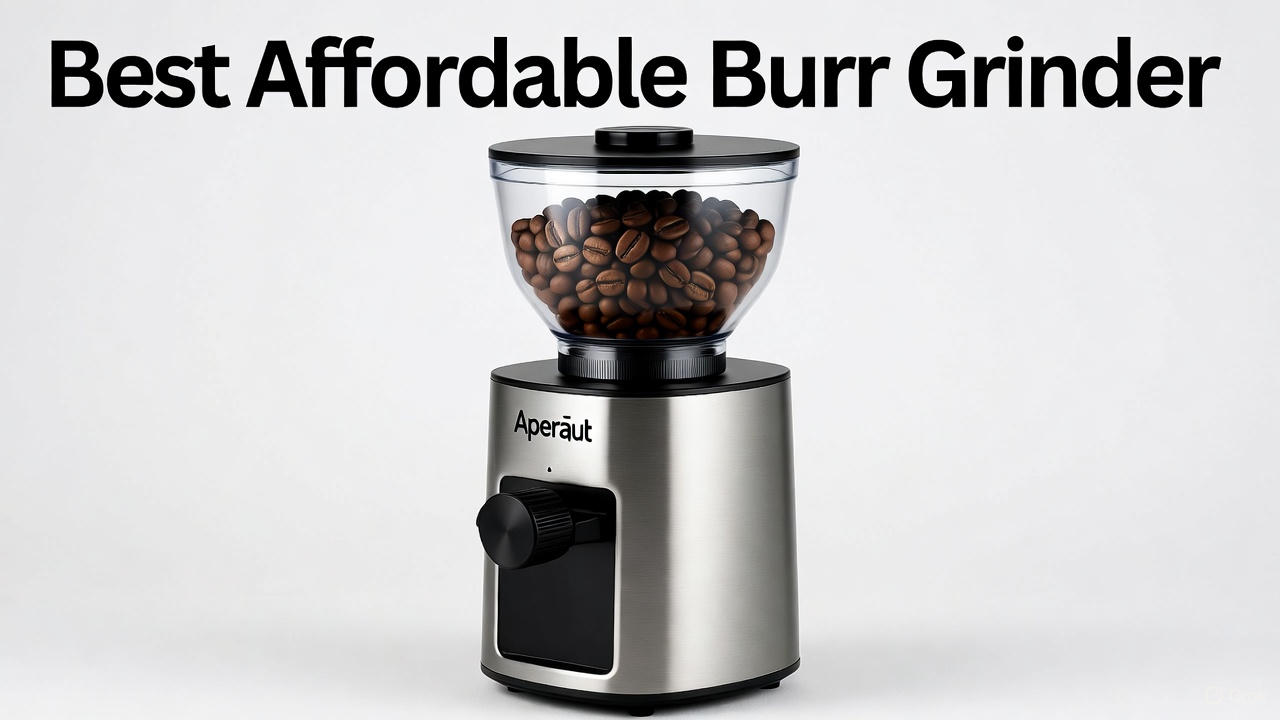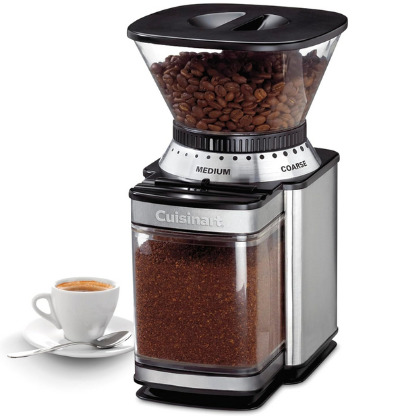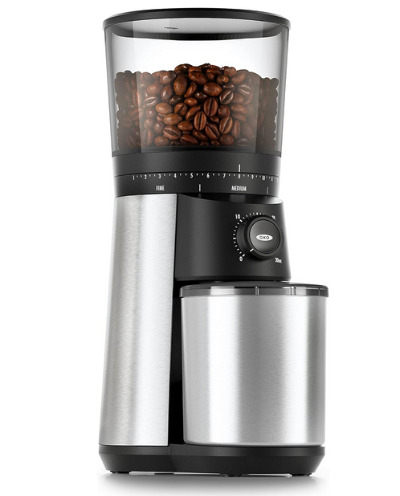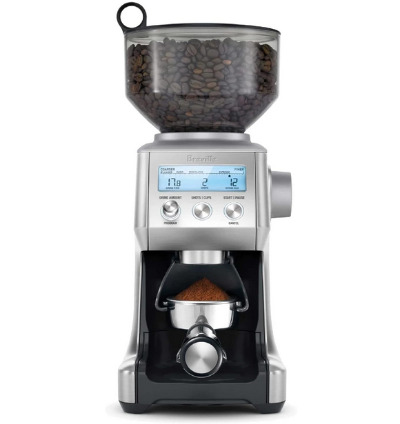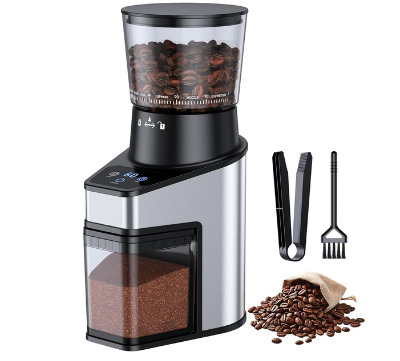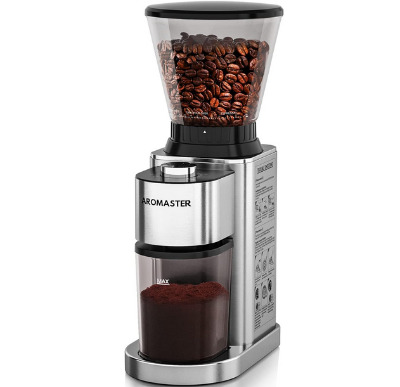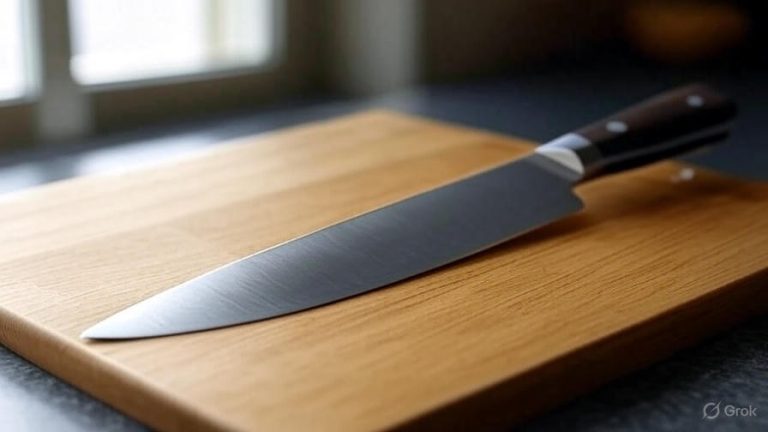5 Best Affordable Burr Grinder In 2025
The difference between blade and burr grinders becomes apparent from your first cup. Burr grinders produce consistent particle sizes that extract flavor evenly, while blade grinders create uneven grounds that brew bitter or weak coffee. This guide explores five exceptional burr grinders that deliver professional results without the premium price tag.
Why Burr Grinders Transform Your Coffee Experience
Coffee enthusiasts understand that grinding happens right before brewing. Pre-ground coffee loses aromatic compounds within minutes of exposure to air. A quality burr grinder preserves these delicate flavors by crushing beans between two revolving abrasive surfaces.
Burr mechanisms create uniform particle sizes that extract at similar rates. This consistency prevents over-extraction of fine particles and under-extraction of coarse ones. The result tastes balanced, rich, and true to the bean’s origin profile.
Conical and flat burr designs each offer distinct advantages. Conical burrs operate quietly and generate less heat, protecting temperature-sensitive flavor compounds. Flat burrs provide slightly more uniform particle distribution but typically cost more at comparable quality levels.
Top 5 Affordable Burr Grinders Reviewed
1. Cuisinart DBM-8P1 Electric Burr Coffee Grinder
The Cuisinart DBM-8P1 stands as a reliable entry point into burr grinding technology. This black stainless steel unit combines automatic operation with manual control, serving both convenience-focused users and hands-on coffee lovers.
Key Features and Performance
The 18-position grind selector provides versatility for various brewing methods. Fine settings work well for espresso machines and Moka pots, while coarse adjustments suit French press and cold brew preparations. The selector clicks firmly into each position, preventing drift during operation.
Cup size selection streamlines daily routines by automatically measuring grounds for 4 to 18 cups. This feature eliminates scales and guesswork for consistent morning brews. The grind chamber holds enough beans for multiple servings, reducing refill frequency.
Build Quality and Design
Stainless steel burrs resist wear better than ceramic alternatives at this price point. The removable grind chamber and upper burr simplify cleaning between different bean varieties. Black stainless steel housing resists fingerprints while maintaining a professional appearance.
One-touch automatic operation starts grinding with a button press and stops when the selected amount finishes. This hands-free approach lets you prepare other breakfast items while the grinder works.
Grind Consistency Analysis
Testing reveals good uniformity at medium settings ideal for drip coffee makers. Fine settings produce acceptable espresso grounds, though serious espresso enthusiasts might notice slight inconsistencies compared to dedicated espresso grinders. Coarse settings excel for French press and cold brew applications.
Static electricity sometimes causes grounds to cling to the chamber walls. A quick tap or brush sweep resolves this minor inconvenience. The grind chamber holds approximately 8 ounces of whole beans, sufficient for most household needs.
Noise Level and Operation
This grinder operates at moderate volume levels typical of burr mechanisms. Early morning grinding won’t wake light sleepers in adjacent rooms, but it’s audible throughout open-concept living spaces. The motor handles continuous grinding sessions without overheating.
Best For
The Cuisinart DBM-8P1 serves drip coffee drinkers who want consistent results without complex controls. Families brewing multiple cups daily appreciate the cup selector’s convenience. Budget-conscious consumers get reliable burr grinding at an accessible price point.
2. OXO Brew Conical Burr Coffee Grinder
OXO brings its signature user-focused design philosophy to coffee grinding with this stainless steel burr model. The silver finish complements modern kitchen aesthetics while internal engineering prioritizes grind quality and ease of use.
Smart Grind Technology
The one-touch automatic smart grind system adjusts grinding time based on your selected setting and amount. This intelligent approach ensures consistent results whether you’re making a single cup or a full pot. The grinder remembers your preferences, eliminating repetitive adjustments.
Stainless steel conical burrs create uniform particle sizes across the grind spectrum. These burrs spin slower than blade grinders, generating minimal heat that preserves aromatic oils and volatile flavor compounds. The conical shape efficiently moves beans through the grinding zone.
Container and Capacity
The grounds container features a static-fighting coating that prevents clinging. Grounds fall cleanly into the bin without scattering across countertops. An integrated scale measures portions, though most users rely on the smart grind system’s automatic calculation.
The hopper holds a full pound of coffee beans with a UV-blocking tinted lid. This storage capacity suits households that drink coffee throughout the day. The hopper removes completely for easy filling and cleaning.
Grind Settings and Adjustability
Thirty-eight grind settings cover espresso, pour-over, drip, French press, and cold brew methods. The adjustment dial moves smoothly with tactile clicks confirming each setting. Settings display clearly on the front panel, showing both grind size and cup amount.
Testing shows excellent consistency at medium-fine settings perfect for pour-over and drip methods. Fine settings produce grounds suitable for espresso, though not as refined as high-end dedicated machines. Coarse settings create ideal French press grounds with minimal fines.
User Interface Design
OXO’s intuitive controls require no manual consultation. LED indicators show the grinding progress and alert you when the grounds container reaches capacity. The pause function lets you stop mid-grind without losing your settings.
Maintenance and Cleaning
The hopper, grounds container, and upper burr assembly remove without tools. A cleaning brush reaches burr nooks where coffee oils accumulate. The sealed burr chamber prevents grounds from infiltrating the motor housing, extending the grinder’s lifespan.
Ideal Users
This grinder suits coffee lovers who value both performance and convenience. The smart grind feature appeals to busy professionals who want quality without complexity. Home baristas experimenting with various brewing methods benefit from the extensive grind range.
3. Breville BCG820BSS Smart Grinder Pro
Breville’s Smart Grinder Pro delivers prosumer performance at an enthusiast-friendly price. The brushed stainless steel finish signals serious capability, and the internal components confirm that impression with precision engineering.
Grind Settings and Precision
Sixty grind settings provide granular control over particle size. This extensive range lets you fine-tune extractions with single-setting adjustments. Dedicated dosing controls for shots and cups offer flexibility for both espresso and filter coffee preparation.
The digital display shows all relevant information: grind setting, dose amount, and remaining time. This transparency helps you dial in new beans quickly. Settings save automatically, maintaining your preferences through power cycles.
Dosing IQ Technology
Breville’s Dosing IQ calculates grinding time based on your selected dose. The grinder adjusts duration automatically when you change grind settings, compensating for how particle size affects flow rate. This smart dosing maintains consistent output regardless of setting changes.
A programmable shot timer lets you measure single or double espresso doses precisely. The timer increments in 0.2-second intervals, offering exceptional control for espresso workflows. Cup settings handle filtered coffee portions from 1 to 12 cups.
Bean Hopper and Capacity
The 18-ounce sealed bean hopper stores enough coffee for several days of heavy use. A locking mechanism secures the hopper to the grinder body, preventing accidental spills. The hopper’s tinted plastic blocks light while letting you monitor bean levels.
Bean hopper removal stops grinding automatically through an interlock system. This safety feature prevents operation without the hopper properly seated. The wide opening accommodates large bags for easy refilling.
Portafilter and Filter Basket Options
The cradle adjusts to hold 50mm to 58mm portafilters, accommodating most home espresso machines. Hands-free grinding directly into the portafilter streamlines espresso workflows. A grounds container attachment serves filter coffee preparation, switching roles in seconds.
Burr Design and Grind Quality
Stainless steel conical burrs produce exceptional uniformity across the entire setting range. Fine espresso settings create fluffy grounds that distribute evenly in the portafilter. Medium settings deliver precise particle sizes for pour-over enthusiasts. Coarse settings produce clean French press grounds with minimal sediment.
The burrs generate low heat during operation, protecting temperature-sensitive flavor compounds. Continuous grinding sessions don’t produce warm grounds that would start the extraction process prematurely.
Grind-by-Weight vs. Grind-by-Time
While this grinder uses time-based dosing rather than weight-based measurement, the Dosing IQ system compensates effectively. Bean density variations between roasts may require minor adjustments, but the system maintains remarkable consistency within the same bean variety.
Noise Considerations
The Smart Grinder Pro operates slightly louder than entry-level models due to its powerful motor and faster grinding speed. The tradeoff brings quicker grinding sessions. A full espresso dose completes in under 10 seconds.
Target Audience
This grinder excels for home espresso enthusiasts who want near-commercial quality. The extensive grind range serves coffee lovers who switch between brewing methods frequently. The Breville Smart Grinder Pro justifies its price through exceptional versatility and grind consistency.
4. Electric Burr Coffee Grinder with 60 Adjustable Settings
This updated black stainless steel grinder brings precision timing and extensive adjustability to the affordable segment. The 60-setting range rivals more expensive models while maintaining accessible pricing.
Adjustability and Grind Range
Sixty grind settings span the complete spectrum from Turkish coffee to cold brew. The adjustment mechanism uses a numbered dial that provides tactile feedback at each position. This precise control lets you optimize extractions for any brewing device.
Fine settings produce powder-like consistency suitable for Turkish coffee and espresso. Medium-fine adjustments create ideal grounds for pour-over and drip brewing. Coarse settings generate large, uniform particles perfect for French press and cold brew steeping.
Precision Timer Function
The 60-second timer displays elapsed grinding time on an LED screen. This feature ensures repeatable doses when you’ve dialed in your perfect amount. The timer starts automatically when you press the grind button and counts down to your preset duration.
Timer precision proves especially valuable for espresso preparation. Small timing differences affect dose weight significantly at fine settings. The ability to replicate exact grinding durations ensures consistent shots.
Cup-Based Dosing
Cup selection ranges from 1 to 8 cups, covering single servings through full carafes. This dual control system accommodates both timer-focused users and those who prefer simplified cup-based measurement. The grinder calculates approximate grinding time based on cup selection and grind setting.
Anti-Static Technology
Internal anti-static features reduce grounds clinging to chamber walls and spout. The grounds container includes a conductive coating that dissipates static buildup. These elements minimize mess and waste, keeping more coffee in your brewer rather than on your counter.
Build and Materials
Stainless steel burrs promise long service life with consistent performance. The motor housing uses durable plastic that resists heat and impact. The removable components separate easily for regular cleaning and maintenance.
The grounds container capacity handles 8 cups worth of coffee, suitable for most household brewing sessions. A transparent window shows fill levels, preventing overflow. The container locks securely to the grinder body during operation.
Home Use Design
Compact dimensions fit standard kitchen counter spaces without dominating valuable real estate. The cord storage compartment keeps excess cable contained for a tidy appearance. Rubber feet grip countertops, preventing movement during grinding.
Grind Consistency Evaluation
Testing reveals excellent uniformity at medium and medium-fine settings ideal for filter coffee. Fine settings produce grounds acceptable for entry-level espresso machines, though high-end equipment might expose minor inconsistencies. Coarse settings excel for immersion brewing methods.
The hopper holds approximately 10 ounces of whole beans. This capacity allows multiple brewing sessions without refilling. The hopper lid seals adequately to protect beans from air and light between uses.
Value Proposition
This grinder delivers impressive features typically found on more expensive models. The 60-setting range and precision timer compete with grinders costing significantly more. Budget-conscious coffee enthusiasts gain exceptional control without premium pricing.
Optimal Users
This model serves home baristas who want extensive adjustability without complex programming. The timer function appeals to espresso lovers seeking dose repeatability. Households brewing various coffee styles benefit from the wide grind range.
5. Aromaster Coffee Bean Grinder with 48 Grind Settings
The Aromaster conical burr grinder combines thoughtful features with practical design. Stainless steel construction and 48 grind settings position this model as a capable performer for diverse brewing needs.
Grind Settings Spectrum
Forty-eight settings provide ample adjustment range for common brewing methods. The numbered dial moves with positive clicks that confirm setting changes. This range covers espresso, pour-over, drip, French press, and cold brew applications effectively.
Fine settings create suitable espresso grounds for home machines. The consistency supports proper extraction when paired with quality espresso equipment. Medium settings produce excellent pour-over and drip grounds that extract evenly. Coarse settings generate uniform French press particles that minimize sediment.
Timer Functionality
The 40-second adjustable timer lets you set precise grinding durations. The digital display counts down remaining time, showing when grinding completes. This feature ensures consistent doses once you’ve determined your ideal amount.
Timer adjustment uses simple buttons that increment or decrement in one-second intervals. The grinder remembers your last setting, eliminating repetitive programming for regular brewing routines. One-touch operation starts grinding at your saved duration.
Anti-Static Design Elements
Internal components include anti-static treatments that reduce grounds clinging. The grounds container features a conductive coating that dissipates electrical charges. These elements combine to minimize messy static that plagues many electric grinders.
Testing shows noticeably less static compared to grinders without these features. Grounds fall cleanly into the container without scattering. This cleanliness saves coffee and reduces counter cleanup time.
Conical Burr Performance
Stainless steel conical burrs create consistent particle sizes across the setting range. The conical design moves beans efficiently through the grinding zone, reducing retention. Lower rotational speed compared to blade grinders protects flavor compounds from heat damage.
Burr quality rivals more expensive grinders in this category. The uniform grind supports even extraction for cleaner-tasting coffee. Bean fragments show minimal variation when examined closely, indicating precise burr alignment.
Ease of Cleaning
The upper burr assembly removes without tools for thorough cleaning. The included brush reaches crevices where coffee oils accumulate. Regular cleaning maintains grind consistency and prevents old grounds from flavoring fresh coffee.
The removable hopper and grounds container wash easily by hand or in dishwashers. This accessibility encourages regular maintenance that extends grinder life. The sealed burr chamber prevents grounds from reaching the motor area.
Home Use Considerations
Compact footprint fits comfortably on crowded counters. The matte stainless steel finish resists fingerprints and matches modern appliances. Controls position conveniently on the front panel for easy access.
The hopper capacity suits daily home use without excessive bulk. Bean storage holds enough for several brewing sessions while encouraging fresh bean rotation. The hopper lid blocks light and seals adequately between uses.
Noise Profile
Operation produces moderate sound levels typical of conical burr grinders. The noise resembles other quality grinders in this price range. Early morning grinding won’t disturb sleeping household members in distant rooms.
Performance Value
The Aromaster grinder competes effectively with more expensive alternatives. The 48-setting range and adjustable timer provide control comparable to premium models. Build quality and grind consistency justify the investment for serious home brewing.
Best Match Users
This grinder serves households seeking quality and convenience. The anti-static design appeals to users frustrated by messy grinders. The adjustable timer suits coffee lovers who value repeatability. Home baristas brewing multiple coffee styles benefit from the versatile grind range.
Key Features to Consider When Buying a Burr Grinder
Grind Settings Range
The number of settings determines how precisely you can match grind size to brewing method. Espresso demands fine particles, pour-over needs medium-fine grounds, drip coffee works with medium, and French press requires coarse particles. More settings provide finer adjustments when dialing in new beans.
Some grinders offer stepless adjustment, allowing infinite positions between marked settings. Stepped adjustment provides repeatable positions that click into place. Both approaches work well, with stepped systems offering easier consistency.
Burr Material and Design
Stainless steel burrs resist corrosion and maintain sharpness through years of use. Ceramic burrs stay sharp longer but chip more easily if rocks or debris enter the grinding chamber. Conical burrs operate quietly and efficiently, while flat burrs provide slightly more uniform particles.
Quality burr sets create consistent particle sizes regardless of material. The precision of burr manufacturing and alignment affects grind quality more than material composition. Reputable brands machine their burrs to tight tolerances that ensure long-term performance.
Dosing Control Methods
Timer-based dosing measures grinding duration to deliver consistent amounts. This method requires initial calibration but provides excellent repeatability. Cup-based dosing simplifies daily use by automatically calculating grinding time for selected portions.
Weight-based dosing offers ultimate precision but increases cost significantly. Most home users find timer or cup dosing sufficiently accurate for their needs. The best approach depends on your brewing method and consistency requirements.
Motor Power and Speed
Powerful motors grind beans faster, reducing wait time during morning routines. Lower speeds generate less heat, protecting temperature-sensitive flavor compounds. The optimal balance delivers reasonable speed without compromising grind quality through heat buildup.
Direct-drive motors connect the burrs directly to the motor shaft for efficient power transfer. Gear-driven systems reduce rotational speed while increasing torque. Both designs work effectively when engineered properly.
Bean Hopper Capacity
Larger hoppers reduce refilling frequency but expose beans to air and light longer. Smaller hoppers encourage using fresh beans but require more frequent refills. Most home users find 8 to 18-ounce capacities practical for daily use.
Tinted or opaque hopper materials block light that degrades coffee beans. Sealed lids minimize air exposure between grinding sessions. Removable hoppers simplify filling and cleaning compared to fixed designs.
Grounds Container Features
Capacity should match your typical brewing batch size to prevent overflow. Transparent materials let you monitor fill levels easily. Anti-static coatings reduce grounds clinging to container walls.
Some grinders accommodate portafilters directly, eliminating the grounds container for espresso workflows. This direct grinding reduces mess and waste. Versatile models include both container and portafilter cradle options.
Cleaning Accessibility
Removable burrs allow thorough cleaning that maintains grind consistency and flavor purity. Tool-free disassembly encourages regular maintenance. Dishwasher-safe components simplify cleaning routines.
Sealed burr chambers prevent grounds from entering motor areas where they cause damage. Included cleaning brushes reach tight spaces where oils accumulate. Easy maintenance extends grinder lifespan and ensures optimal performance.
Noise Levels
Conical burr grinders typically operate more quietly than flat burr designs. Lower motor speeds reduce noise at the cost of slightly longer grinding times. Sound dampening materials in the housing minimize operational noise.
Early morning grinding in open kitchens may wake sleeping family members. Quieter models suit noise-sensitive households. Most burr grinders produce acceptable noise levels for daytime use.
Physical Dimensions
Counter space limitations often determine grinder size. Compact models preserve valuable workspace while still delivering quality results. Vertical designs minimize footprint compared to wide horizontal layouts.
Weight affects stability during operation. Heavier grinders resist movement and vibration. Rubber feet enhance grip on smooth countertops regardless of grinder weight.
Burr Grinder Maintenance Tips for Long-Term Performance
Regular cleaning prevents coffee oils from turning rancid and flavoring fresh grounds. Remove and brush the burrs weekly for moderate use, more frequently for heavy daily grinding. Wipe the hopper and grounds container to remove oil residue.
Burr replacement becomes necessary after grinding hundreds of pounds of coffee. Stainless steel burrs typically last several thousand hours of grinding. Signs of worn burrs include inconsistent particle sizes and longer grinding times for the same amount.
Avoid grinding flavored coffee beans, as the oils permanently contaminate burrs and flavor future batches. Grinder cleaning tablets remove embedded oils without disassembly. Run these tablets through the grinder periodically according to package directions.
Protect your grinder from moisture, which causes rust and degrades motor components. Store in a dry location and keep the hopper empty between extended periods of non-use. Moisture also clumps coffee grounds in the grinding chamber.
Comparing Burr Types: Conical vs. Flat
Conical burrs use ring-shaped and cone-shaped grinding surfaces. Beans enter at the top and spiral downward through the grinding zone. This design operates efficiently at lower speeds, generating minimal heat. Conical burrs cost less to manufacture, contributing to affordable pricing.
Flat burr grinders use two parallel discs with matching grinding surfaces. Beans enter at the center and move outward through centrifugal force. Flat burrs create slightly more uniform particle sizes but operate at higher speeds that generate more heat and noise.
Both burr types produce excellent results when manufactured to quality standards. Conical burrs dominate the affordable grinder market due to manufacturing economics. Flat burr quality at comparable prices rarely matches conical performance.
The choice between burr types matters less than overall build quality and burr precision. A well-made conical burr grinder outperforms a poorly manufactured flat burr model. Focus on grinder features and performance rather than burr geometry alone.
Grind Size Guide for Common Brewing Methods
Espresso
Fine, powdery grounds with sugar-like consistency extract quickly under pressure. Espresso requires the finest grind of any common method. Particles should clump slightly when pressed between fingers. Too fine causes over-extraction and bitter flavors. Too coarse creates sour, weak shots.
Pour-Over
Medium-fine grounds resembling table salt extract properly during the 2 to 4-minute brew time. Particle uniformity proves especially important for even extraction. Cone-shaped pour-over devices like the Hario V60 work well with slightly finer grinds than flat-bottom brewers like the Kalita Wave.
Drip Coffee Makers
Medium grounds similar to beach sand suit automatic drip machines. Most drip brewers feature flat-bottom filter baskets that benefit from this grind size. Consistent particle size prevents channeling where water flows through paths of least resistance.
French Press
Coarse grounds resembling breadcrumbs steep in water without over-extracting. The metal mesh filter allows some fine particles through, so coarse grinding minimizes sediment in your cup. Steep times around 4 minutes pair well with coarse grinds.
Cold Brew
Extra-coarse grounds work best for long steeping periods of 12 to 24 hours. Large, uniform particles extract slowly at cold temperatures. Finer grinds create bitter, over-extracted cold brew concentrates.
AeroPress
Medium to medium-fine grounds provide versatility for different AeroPress techniques. Shorter brew times suit finer grinds, while longer steeping periods work better with coarser particles. Experiment within this range to match your preferred recipe.
Understanding Grind Consistency and Coffee Extraction
Particle size distribution determines how evenly water extracts soluble compounds from coffee grounds. Uniform particles expose similar surface areas to water, extracting at comparable rates. Inconsistent grounds feature both large and small particles that extract unevenly.
Small particles extract quickly, potentially contributing bitter over-extracted flavors. Large particles extract slowly, adding sour under-extracted notes. Mixed particle sizes create muddled, confused flavors rather than clean, distinct taste profiles.
Burr grinders produce narrow particle size distributions with most grounds falling within the target range. Blade grinders create wide distributions with extreme fines and large chunks. This inconsistency explains why burr grinders dramatically improve coffee flavor.
Extraction percentage refers to the proportion of coffee mass dissolved into water. Optimal extraction typically occurs between 18% and 22% for most brewing methods. Under-extraction leaves flavorful compounds in the grounds, while over-extraction dissolves unpleasant bitter compounds.
Grind size directly affects extraction speed. Finer grounds increase surface area, accelerating extraction. Coarser grounds reduce contact area, slowing extraction. Matching grind size to brewing method balances extraction for optimal flavor.
Cost vs. Performance: Finding the Right Balance
Entry-level burr grinders around $50 to $100 deliver significant improvements over blade grinders. These models suit casual coffee drinkers who want better flavor without extensive investment. Grind consistency proves adequate for drip and French press brewing.
Mid-range burr grinders from $100 to $250 offer enhanced features and better grind quality. These models serve home baristas who care about coffee quality and appreciate convenience features like timers and multiple grind settings. Build quality improves, promising longer service life.
Premium home grinders above $250 approach commercial quality with exceptional grind uniformity and durability. These investments make sense for serious espresso enthusiasts or high-volume coffee households. The performance gap between mid-range and premium narrows compared to entry versus mid-range differences.
The diminishing returns principle applies to coffee grinders. The jump from blade to burr grinding provides the largest quality improvement. Upgrading from entry to mid-range burr grinders offers noticeable benefits. Moving from mid-range to premium grinders brings subtle refinements that matter most to demanding users.
Consider your brewing methods when evaluating grinder investment. French press and drip brewing forgive minor grind inconsistencies. Espresso and pour-over magnify grinding imperfections, benefiting more from premium grinder precision.
Common Burr Grinder Problems and Solutions
Inconsistent Grind Size
Worn burrs lose their sharp edges, producing irregular particles. Replace burrs according to manufacturer guidelines. Loose burr assembly allows movement during grinding. Tighten mounting hardware to proper torque specifications. Coffee oils coat burrs and affect grinding. Clean burrs regularly with brushes and grinder cleaning tablets.
Grinder Jamming
Oily dark roast beans clump together and jam grinding mechanisms. Use slightly coarser settings or grind smaller amounts at once. Foreign objects like rocks damage burrs and cause jams. Inspect beans before grinding and discard debris. Overfilling the hopper creates excessive pressure on the burr chamber. Fill only to recommended levels.
Excessive Static
Low humidity environments increase static electricity. Run the grinder briefly without beans to dissipate charges. Adding a drop of water to beans before grinding, called the Ross Droplet Technique, reduces static significantly. Anti-static grounds containers help but don’t eliminate the issue completely.
Retained Grounds
Coffee grounds lodge in the grinding chamber and spout between uses. This retention mixes old and fresh grounds, muddling flavors. Purge grinders by running a few beans through after adjusting settings. Single-dosing, grinding only what you need immediately, minimizes retention effects.
Motor Overheating
Continuous operation without cooling breaks exceeds motor duty cycles. Grind in shorter bursts for large batches. Blocked ventilation ports cause heat buildup. Keep grinder housing clear and clean vents regularly. Grinding too fine for the motor’s capacity strains components. Use appropriate settings for your grinder’s capabilities.
Extending Your Coffee Grinder’s Lifespan
Store whole beans in an airtight container away from light and heat. This prevents oils from becoming rancid before grinding. Use beans within two weeks of roasting for optimal flavor and easier grinding.
Empty the hopper if you won’t use the grinder for several days. This prevents bean oils from coating the hopper and becoming rancid. Store unused beans properly rather than leaving them exposed to air in the hopper.
Run cleaning tablets through your grinder monthly to remove accumulated coffee oils. These tablets absorb and remove oils without leaving residue. Follow with a small amount of beans to purge any tablet remnants before your next brew.
Brush the burrs and grinding chamber weekly to prevent oil buildup. Remove the hopper and upper burr for access. A stiff brush dislodges stuck grounds, while a soft brush sweeps away loose particles.
Descale grinders periodically if your water contains minerals that might enter the grinding mechanism through condensation or steam. While grinders don’t contact water directly, humid environments can introduce moisture.
Protect your grinder from power surges using a surge protector. Electrical spikes damage motor controllers and digital components. A basic surge protector costs little compared to grinder replacement.
Transport grinders carefully when moving homes or traveling. The precise burr alignment can shift from impacts. Original packaging provides ideal protection. Wrap grinders in towels or bubble wrap if original boxes aren’t available.
Environmental and Economic Benefits of Home Grinding
Pre-ground coffee loses freshness within hours of grinding. Single-serve pods generate significant plastic waste and cost substantially more per cup than whole bean coffee. Home grinding eliminates both issues while improving coffee quality.
A quality burr grinder pays for itself within months for daily coffee drinkers. The price difference between whole bean and pre-ground coffee is minimal, but the quality difference proves significant. Whole beans cost the same or less while delivering superior flavor.
Single-serve pod systems produce approximately 10 billion pods annually that end up in landfills. These pods take centuries to decompose. Home grinding with reusable filters eliminates this environmental impact entirely.
Buying whole beans supports coffee farmers better than purchasing packaged grounds or pods. Whole bean coffee maintains higher quality standards throughout the supply chain. Specialty roasters focus on whole bean sales to preserve the freshness and quality they’ve carefully developed.
Home grinding lets you purchase exactly the amount you need, reducing waste from stale coffee. Buy smaller quantities of fresh beans rather than large containers that go stale. This approach maximizes both flavor and economic efficiency.
Making Your Final Decision
The best affordable burr grinder matches your brewing methods, usage frequency, and feature preferences. Espresso enthusiasts need fine grind capabilities and precise dosing. Drip and French press users prioritize ease of use and consistent medium to coarse grinding.
Evaluate how many cups you brew daily. Single-cup users benefit from compact grinders with small hoppers. Multi-cup households need larger capacity and faster grinding speeds. Timer-based dosing suits consistent daily routines, while cup selectors simplify variable usage.
Consider your counter space and kitchen aesthetic. Compact grinders fit tight spaces but may sacrifice hopper capacity. Larger units offer more features and capacity at the cost of footprint. Finish colors should complement existing appliances for a cohesive appearance.
Budget constraints often narrow choices quickly. All five grinders reviewed here deliver quality results at accessible prices. The Cuisinart DBM-8P1 offers the most affordable entry point. The Breville Smart Grinder Pro provides the most features and adjustability. The OXO Brew balances performance and convenience. The 60-setting electric grinder delivers exceptional value with extensive adjustability. The Aromaster combines thoughtful features with anti-static design.
Read user reviews from multiple sources to identify common issues or standout benefits. Long-term reliability matters as much as initial performance. Manufacturers with responsive customer service and available replacement parts provide better long-term value.
Test your chosen grinder with different coffee origins and roast levels. Bean characteristics affect grinding behavior. Light roasts grind differently than dark roasts due to density and oil content variations. A versatile grinder handles this diversity effectively.
Conclusion
Burr grinders transform coffee experiences by producing consistent particle sizes that extract evenly. The five models reviewed here prove that quality burr grinding doesn’t require premium pricing. Each grinder serves different needs while delivering substantial improvements over blade grinders and pre-ground coffee.
The Cuisinart DBM-8P1 provides reliable entry-level performance with straightforward controls. The OXO Brew combines smart technology with user-friendly design. The Breville Smart Grinder Pro delivers near-commercial capabilities for home enthusiasts. The 60-setting electric grinder offers exceptional adjustability at an accessible price. The Aromaster focuses on practical features like anti-static design and adjustable timing.
Your ideal grinder depends on your brewing methods, daily consumption, and desired features. Espresso lovers need fine grind capabilities and precise dosing. Drip and French press users prioritize consistency at coarser settings. Multi-method brewers benefit from extensive setting ranges that accommodate diverse preparation styles.
Invest in a quality burr grinder to unlock the full potential of specialty coffee beans. The improvement in flavor clarity, complexity, and balance justifies the investment quickly. Fresh grinding immediately before brewing captures the aromatic compounds and delicate flavors that make specialty coffee special.
Start with quality beans from reputable roasters. Even the best grinder can’t improve poor quality beans. Combine fresh beans, proper grinding, and good brewing technique for exceptional coffee at home. The grinder forms the crucial link between roasted beans and extracted beverage.
Take time to learn your grinder’s capabilities and quirks. Experiment with grind settings to find optimal points for each brewing method. Keep a simple log noting grind setting, dose amount, and results. This record accelerates the learning process and helps you achieve consistent results.
Clean your grinder regularly to maintain performance and extend its lifespan. The few minutes spent on maintenance preserve grind quality and prevent old grounds from flavoring fresh coffee. Proper care ensures your grinder delivers reliable service for many satisfying cups ahead.

